
What you measure will largely depend on your business KPIs, but there are a few standard metrics that clearly indicate performance. With SEO, you will generally want to look at Organic traffic increases as the first sign that improvements are having results. But this is a very high-level view of success.
To understand the effect on the bottom line, measurement plans and measurement tracking will need to be implemented. These can offer the ultimate measurement of the success of your efforts.
A good portion of your projections and ROI predictions will be based on rankings. However, it’s important that you do not fall into the trap of associating rankings with results. While there is a strong correlation, garnering tons of rankings for terms that have nothing to do with your business will result in little more than a pretty slide on a report followed by puzzled faces when the following slide shows no improvement to revenue.
When measuring results, always try to put yourself in the shoes of a business owner. While winning top positions on a handful of keywords can get you a pat on the back from your peers, the bottom line is what matters.
Understand the business KPIs ahead of time and strive to improve them rather than just going for vanity term rankings or traffic that may or may not be qualified. If the site’s goal is to generate leads, go by that. If exposure and traffic is what you’re after, then users, pageviews, and pages per session would be the right metrics to look at.
At the end of the day, absolutely any metric could indicate whether or not you’re meeting the business goals. What you really need to be focusing on is how you’re measuring these metrics to show performance improvements.
Measuring results and showing ROI will almost always come down to a form of an A/B test. Whether you test performance before and after a change went live, or do split testing, you will inevitably approach proving results by comparing performance of the site with and without SEO.
Unlike some other traditional marketing channels, data will always dictate the success or failure of an SEO project. Here are a couple of ways to do A/B testing with respect to SEO:
1. Date segmentation: Isolate the SEO event and compare equal in length date ranges before and after it was implemented. Make sure to give it ample time to have reliable results (the length of time will depend on the type of work that was completed). While there are many variables that can affect the findings like algorithm updates, seasonality, non-search marketing, and brand equity, this test can offer insight into whether change resulted in positive change. Here’s an example of what this might look like in Google Analytics:
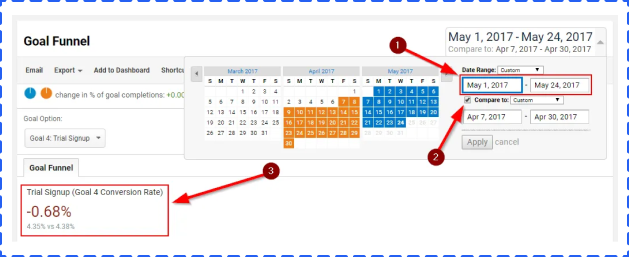
2. Split testing: Identify templated content on the site with a large enough set. Then apply SEO changes to a subset and compare to the control pages. Because all variables, such as seasonality, will apply across the board, this test format allows you to isolate SEO as the single test variable. If you see net gains or net losses across the whole test group, you can confidently assume that this was related to the SEO item you were testing.
3. Bespoke SEO: Search engine optimization is not a paint-by-numbers game. SEO needs to be tailored to the website, brand, page, user and asset type. While there are many seasoned SEOs you can hire or reference in order to create a solid strategy, SEO most likely to drive revenue is ultimately that which has been tested, measured, perfected and tested again to drive performance that achieves your goals.
Calculating ROI for SEO is hard. With so many variables and moving parts, it can be difficult to determine how hard your SEO budget is working. Here are some of the reasons why ROI for SEO can be difficult to determine:
Google’s algorithm
Google’s algorithm is a mystery, and probably always will be. Because people use manipulative, illegitimate, and unsavory techniques to gain better rankings, search engines’ algorithms are constantly evolving to combat these tactics. The only way to gain insights into how search algorithms work, and to keep up with them, SEOs need to constantly be testing and analyzing performance.
There are 200+ ranking factors
While Google’s algorithm may be a big secret, SEOs everywhere publish their findings to help identify ranking factors in Google’s algorithm. To date, more than 200 have been published. With so many factors being considered to determine a website’s ranking, it’s impossible to focus on them all. That’s why it’s essential to focus on those that apply to the website, the users, and objectives unique to the business.
What works today may not work tomorrow
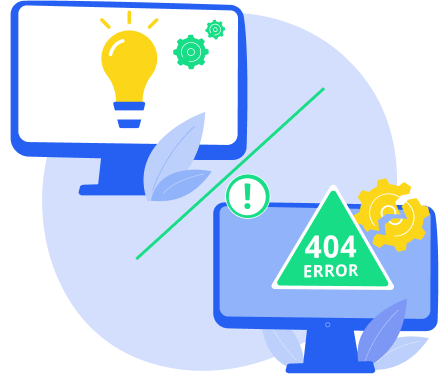
Despite SEOs best efforts to understand the algorithm and work to best optimize for it, Google’s algorithm is constantly evolving. This is why SEO is a continuous, always-on tool for generating ROI, and never a once-off.
“SEO is a marketing function for sure, but it needs to be baked into a product, not slapped on like icing after the cake is baked.” – Duane Forrester, VP of Industry Insights with Yext
Experiments have long life cycles
As mentioned, testing is one of the best ways to stay ahead of algorithm updates, but it’s not always a quick technique. If someone is split-testing a set of landing pages that have 300,000 visitors per week, it’s easy to see what is and isn’t working very quickly. But that isn’t necessarily the case for all websites. With SEO, initiatives can take time to plan, execute, and measure, and even then often need to be repeated in order to fully understand the results.
Isolating variables is near-impossible
SEOs are typically implementing multiple initiatives simultaneously. This makes it difficult to isolate which variable or factor may have led to an increase in ranking or traffic. In a scientific lab, a variable can be isolated one at a time and be compared to a ‘control’ group. With SEO, we don’t have controlled environments to work in.
Measuring ROI is hard
Regardless of how SEO factors affect the measurement of ROI, the act of measuring ROI itself isn’t always straightforward. The customer journey is not a straight line, making it complicated to attribute leads or purchases to one channel alone, SEO or otherwise. Measuring organic performance alone can be tricky. Trying to measure a multi-channel funnel and assisted conversions can be even more taxing. All of this is something to consider before and throughout your ROI projection reporting.

Measurement ultimately shows changes in performance, whether they’re positive or negative. In order to show these shifts, benchmarks and goals need to be set. Start by auditing current performance and identifying what changes would indicate improvements. This would require understanding your business goals and all the factors that lead to their improvement. If it’s leads, you may want to identify assets on the site that you believe will generate those leads and measure the baseline organic traffic to compare future traffic to.
Key performance indicators, or KPIs, will then need to be set. These, as the name suggests, indicate whether performance is achieving business goals. KPIs will identify which metrics need to be measured and what changes need to be seen in order to indicate success.
In order to measure all of the metrics you will need to isolate a control and test group in some way. The most common way to measure is to look at date ranges before and after changes were implemented. If you are doing split testing, you can do this as a side by side analysis to see if the updates had an effect on the test group and compare those to the control group.
Measurement tools
There are multiple tools available for measuring SEO performance. There are free, affordable and premium tools available to measure a multitude of metrics. The tools you’ll need to measure performance will depend on your goals, KPIs and implemented SEO.
• Google Analytics
Google Analytics us a free tool and by far the most popular. It’s hard to find a service that can compete with Google Analytics in terms of price, data, and the number of features available. This tool allows companies to place a value on how much a conversion is worth in their ROI, measure site value (including Organic Search), and report on a multitude of other metrics including conversion goals, traffic, session duration, pages per session and more. Google Analytics must be installed in order to measure and report on performance. It cannot retroactively measure website analytics.
The best place to start in GA is the Acquisition>All Traffic>Channels section (note, the naming conventions may change in the future). Organic is the channel we’re discussing here but you can use this section to calculate ROI of other channels as well. Once you’re in the desired channel, simply adjust dates in the top right corner to compare date ranges.
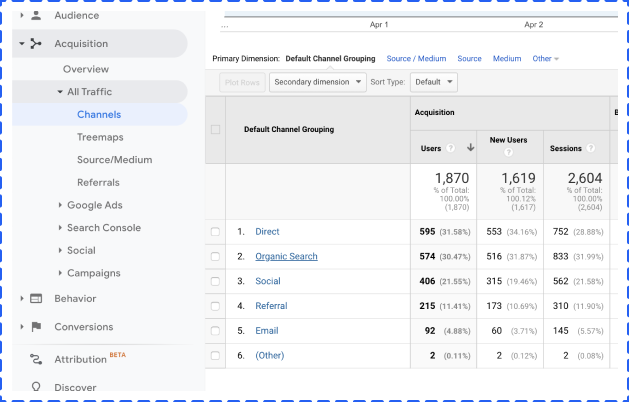
• KWFinder
An SEO Keyword Tool like KWFinder helps companies find long-tail keywords that have a lower level of competition. The experts use this SEO tool to find the best keywords and run analysis reports on backlinks and SERPs. Their Rank Tracker tool easily determines ranking while tracking improvements based on one key metric.
To use the tool, simply put in the keyword you want to target and watch the magic happen. I wanted to see some ideas for “truck flaps” and got back a lot of new keywords with better search volume and
intent match.

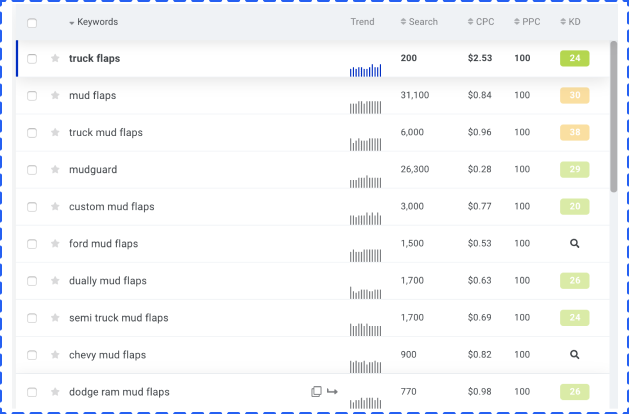
• UberSuggest
This is a free alternative to the KWFinder tool that I’ve seen moderate success with. It’s the same exact concept and can offer valuable keyword research data. There aren’t as many bells and whistles, but it’s a great tool to use if you don’t want to sign up for anything.
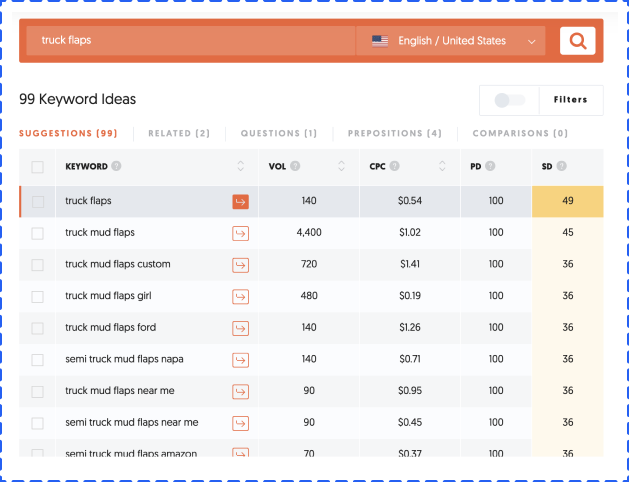
• Majestic
Used by SEO experts worldwide, Majestic focuses on providing web-based link information to help users identify how competitors are performing. Features include website tracking, backlink numbers, industry benchmarks and even keyword research. The UI is fairly intuitive and after putting in the domain you want to review, you get all the information split out by tabs you can browse.
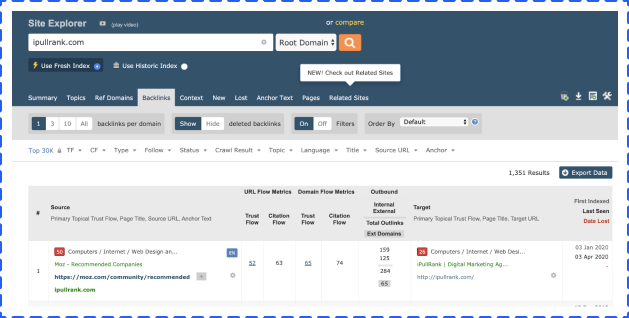
• Moz
As a suite of a number of tools, Moz (formerly SEOMoz) can be a great addition to your toolset. With tools to track keywords, links, and overall SEO health, Moz can give you many new items to measure ROI for. It is also great for pulling backlinks Ahrefs and Majestic may have missed as the three tools discover backlinks in different ways. Though navigation leaves a bit to be desired, once you find the report you want to run, you can get excellent results. One of their best metrics is the backlink spam score which allows you to quickly see how many of your links have commonalities with known spam.
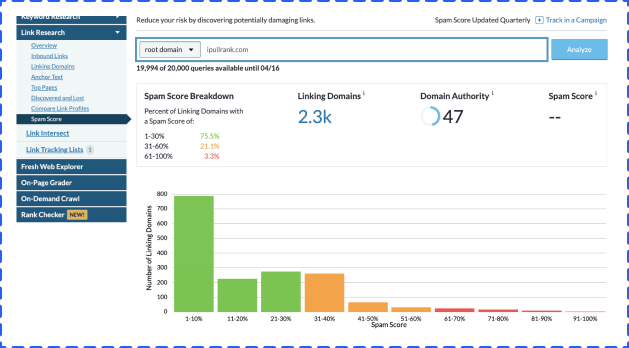
• Ahrefs
Ahrefs can help companies see how pages are performing against keyword rankings and backlinks, for both them and their competitors. Using Ahrefs’ content explorer, you can find new ideas based on the most shared and linked-to posts, rather than relying on gut feeling alone. It’s a great tool for content targeting, competitive research, and keyword ranking. However, Ahrefs has always been the gold standard for backlink research and getting tons of quick insight is a matter of typing in the URL.
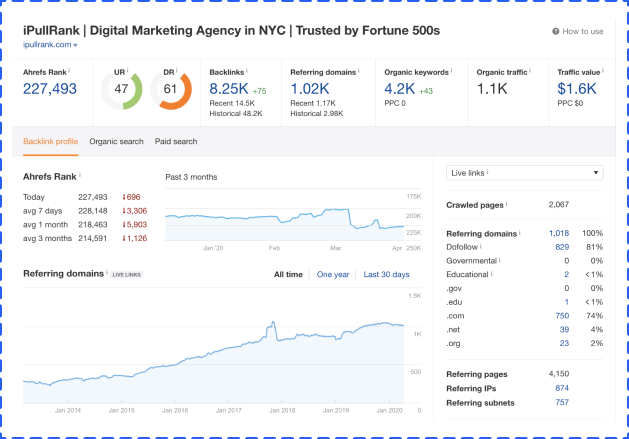
• SpyFu
SpyFu is focused on identifying keyword rankings, costs, performance and trends. SpyFu also offers measurement of competitor backlinks, advertising and keyword rankings. This nifty tool has a ton of great insight for free and can guide your competitor research (as the name suggests, they built the tool to spy on others).
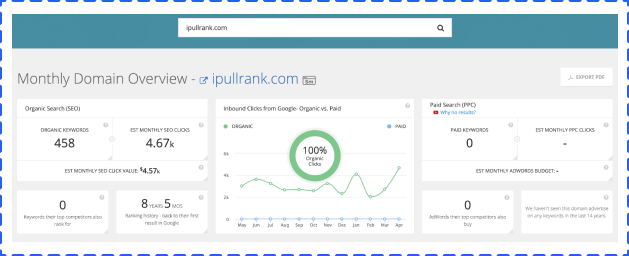
• BuzzSumo
BuzzSumo is a fantastic research tool for all things content. BuzzSumo allows users to find how often and where content has been shared. It can be used to identify topical content, brainstorm new ideas, or even find influencers to promote your content and generate backlink opportunities. BuzzSumo definitely leans towards the content side of SEO but can be a great tool all around. For example, their monitoring tools can tell you when you’ve been mentioned and help you procure backlinks.
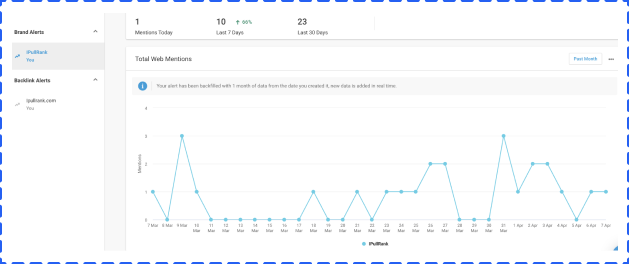
• Screaming Frog SEO Spider
Considered an essential tool for any SEO, Screaming Frog SEO Spider is a website crawler. This tool allows you to crawl websites (yours or competitors) in order to audit and analyse technical on-page SEO performance and identify areas for improvement. There are multiple modes you can use but the primary method is putting in a URL and letting it crawl the entirety of that site to extract valuable on-page data.

• Hubspot
Probably best known for its ability to automate marketing, track leads, drive sales, and manage clients, HubSpot actually features a great set of SEO tools. The HubSpot content strategy tool is great for outlining content plans and aligning them to business objectives. Their SEO optimization tool is also handy for identifying quick wins on pages or URLs. Finally, their analytics help measure performance to show SEO ROI.
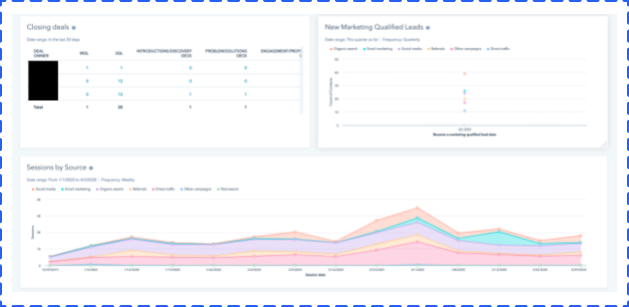
• Google Data Studio
With so many different sources of data, Google Data Studio provides an opportunity to unite the different pieces of the puzzle in a single dashboard. If you use Google Ads and Google Analytics and want to understand the bigger picture and how each contributes, this free dashboard tool will do just that. You can leverage it for communicating highly visual data that will show the bigger picture and tell the full story.

• Google Tag Manager
Using Google Tag Manager can be extremely helpful with tracking your performance. As another free tool from Google, if it is something you are ready to implement on your site, you can really take advantage of the event tracking and data manipulation possibilities offered by GTM. When it comes to measuring ROI, Tag Manager can offer additional metrics you can measure to assess performance and return on the work you complete.
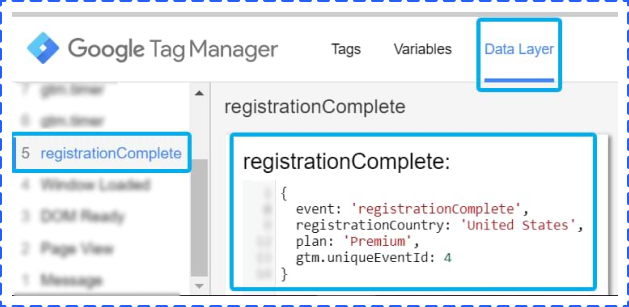
In order to make sure you are measuring ROI at all times, it’s a good idea to break down your SEO plan into measurable parts. From auditing to see how you’ve been doing so far, to eventually reporting on all the projects you completed, each step should lead to eventual ROI on your SEO campaign.
1. Establish a Baseline before any work to measure future results.
2. Audit the site to find everything that needs to be worked on.
3. Identify goals and objectives to meet with your SEO efforts.
4. Create an SEO strategy in order to achieve those goals and objectives.
5. Define deliverables and how they will contribute to performance.
6. Create a measurement plan and set up tracking.
7. Analyze data and interpret results.
8. Report on performance and impact on ROI.
SEO Audit
One of the most effective ways to start an SEO campaign is by conducting a full-scale audit. This project should take a look at all the aspects of your on-site, off-site, and technical SEO. If there are glaring problems that can hurt your site’s opportunity to get crawled, indexed, and drive organic traffic, this step should surface the problem. While the project itself can be short-lived, the issues identified here can lead to numerous development and marketing team projects in order to execute on all the findings.
Because of the nature of most SEO audits, not everything can be implemented in a timely manner all the time. It is thus extremely important to give estimates of level of effort on each task. Even if it’s a simple scale for impact and effort, this can help with prioritization for all the teams working on implementing the recommended items.
Identify goals and objectives
Once your site is technically sound (or in the process of getting there), you should turn on the offensive and define growth goals. These can be as general as showing improvements year over year. However, concrete objectives are better at keeping the business structured (be careful here to set realistic expectations as a pie in the sky goal is unlikely to be taken seriously).
A good goal to set is one that takes into consideration past performance and competitor performance and formulates a figure that can be met. For example, 20% year over year growth in organic visits for a full year is concrete and attainable whereas 200% year over year growth in one quarter is a tall order as it is immediate and extreme.
Create an SEO strategy

Once you’ve laid out the business goals for your SEO campaign, you’ll need to begin strategizing. This step will include going over things that you need to fix as well as identifying opportunities to grow. In some cases there may not be a hard number you can put to the task as only time will tell if the implementation was effective (e.g. updating your meta titles can increase traffic or the current titles could have already been good enough). At top level, your strategy should consist of tactics you’ll employ to recover from past issues, maintain quality, and grow the business.
Define SEO deliverables
Depending on where your current business falls, you can focus your attention on different parts of the strategy. With a long standing product that was never evaluated for SEO health, this might mean that you have to pay off your technical debt and lean in on fixing existing issues more so than focusing on growth opportunities. But no matter what you discover is the most important item to start with, you will need to create projects associated with completing each of the individual goals or deliverables.
A deliverable can be a report, strategy, article, audit, or more. If you need a full site audit, then that is a deliverable. If you think you need to update site architecture, then a file analyzing the current structure and proposing changes is what you will need. No matter what the individual SEO objectives are, always tie them to a specific deliverable that can be shared across teams and referenced throughout implementation.
Create a measurement plan
Once the campaign has started and it comes time to assess the results, you will need to know what to measure and evaluate. It’s thus very important to define what you will be measuring in the beginning. measurement plan will echo your goals and objectives by defining exact metrics you will look at to see if the outcome was a success.
If you are looking to grow traffic to capitalize on ad revenue, then organic users can be something you will review in a measurement plan. Conversely, if the bottom line matters more, organic revenue is something to note. However, a good measurement plan should be multifaceted and assess multiple levels of the funnel to analyze not just the end result but all the business metrics that were affected. Even when goals are not met, a good measurement plan can isolate the root cause (e.g. revenue did not grow because traffic that was built was not qualified and thus didn’t convert).
Analyze data

After you’ve pulled all the data, it’s time to analyze the results. In this step you will need to interpret the data and make a hypothesis about what the bigger picture looks like. While hard numbers are great to show growth or losses, they do not explain the reasons behind the market fluctuations.
It’s going to be your job to review all the findings and tie them to market events or changes to the site. If you saw an immediate decline in traffic following an algorithm update, it’s possible that you were likely affected by that change. Conversely, if a project was implemented and led to a spike in traffic to pages altered in the project, it is possible the implementation was successful. For example, if a series of competitors implement a winning tactic, that you did not, it may appear that there was an algorithm update, when there was not. Or, if everyone implemented a tactic that Google moved to penalize at the same time that you made a change, you might assume it was your optimization when it was actually an algorithm update.
Nevertheless, make sure to find data to back up those assumptions. In many instances, it can be as simple as looking at traffic of individual pages before and after. In a site-wide fluctuation, you may need to run a more in depth analysis to see which areas of the site were affected. This can help solidify your case.
Report on performance
Armed with data and an analysis of the figures, you can now report your findings. The report should blend hard evidence and general observations to paint a full picture. There is no reason to make up random theories about why the market is behaving in a certain way, but if you can tie the findings to causes, you can help tell a full story.
While a 10% uptick on organic users is a clear success story to you, someone not involved in the day to day work you do can quickly dismiss it as a fluke or a result of something another department did (possibly even their own). Come prepared to show evidence of why your reports are accurate and valuable to ROI.

What you measure will largely depend on your business KPIs, but there are a few standard metrics that clearly indicate performance. With SEO, you will generally want to look at Organic traffic increases as the first sign that improvements are having results. But this is a very high-level view of success.
To understand the effect on the bottom line, measurement plans and measurement tracking will need to be implemented. These can offer the ultimate measurement of the success of your efforts.
A good portion of your projections and ROI predictions will be based on rankings. However, it’s important that you do not fall into the trap of associating rankings with results. While there is a strong correlation, garnering tons of rankings for terms that have nothing to do with your business will result in little more than a pretty slide on a report followed by puzzled faces when the following slide shows no improvement to revenue.
When measuring results, always try to put yourself in the shoes of a business owner. While winning top positions on a handful of keywords can get you a pat on the back from your peers, the bottom line is what matters.
Understand the business KPIs ahead of time and strive to improve them rather than just going for vanity term rankings or traffic that may or may not be qualified. If the site’s goal is to generate leads, go by that. If exposure and traffic is what you’re after, then users, pageviews, and pages per session would be the right metrics to look at.
At the end of the day, absolutely any metric could indicate whether or not you’re meeting the business goals. What you really need to be focusing on is how you’re measuring these metrics to show performance improvements.
Measuring results and showing ROI will almost always come down to a form of an A/B test. Whether you test performance before and after a change went live, or do split testing, you will inevitably approach proving results by comparing performance of the site with and without SEO.
Unlike some other traditional marketing channels, data will always dictate the success or failure of an SEO project. Here are a couple of ways to do A/B testing with respect to SEO:
1. Date segmentation: Isolate the SEO event and compare equal in length date ranges before and after it was implemented. Make sure to give it ample time to have reliable results (the length of time will depend on the type of work that was completed). While there are many variables that can affect the findings like algorithm updates, seasonality, non-search marketing, and brand equity, this test can offer insight into whether change resulted in positive change. Here’s an example of what this might look like in Google Analytics:

2. Split testing: Identify templated content on the site with a large enough set. Then apply SEO changes to a subset and compare to the control pages. Because all variables, such as seasonality, will apply across the board, this test format allows you to isolate SEO as the single test variable. If you see net gains or net losses across the whole test group, you can confidently assume that this was related to the SEO item you were testing.
3. Bespoke SEO: Search engine optimization is not a paint-by-numbers game. SEO needs to be tailored to the website, brand, page, user and asset type. While there are many seasoned SEOs you can hire or reference in order to create a solid strategy, SEO most likely to drive revenue is ultimately that which has been tested, measured, perfected and tested again to drive performance that achieves your goals.
Calculating ROI for SEO is hard. With so many variables and moving parts, it can be difficult to determine how hard your SEO budget is working. Here are some of the reasons why ROI for SEO can be difficult to determine:
Google’s algorithm
Google’s algorithm is a mystery, and probably always will be. Because people use manipulative, illegitimate, and unsavory techniques to gain better rankings, search engines’ algorithms are constantly evolving to combat these tactics. The only way to gain insights into how search algorithms work, and to keep up with them, SEOs need to constantly be testing and analyzing performance.
There are 200+ ranking factors
While Google’s algorithm may be a big secret, SEOs everywhere publish their findings to help identify ranking factors in Google’s algorithm. To date, more than 200 have been published. With so many factors being considered to determine a website’s ranking, it’s impossible to focus on them all. That’s why it’s essential to focus on those that apply to the website, the users, and objectives unique to the business.
What works today may not work tomorrow

Despite SEOs best efforts to understand the algorithm and work to best optimize for it, Google’s algorithm is constantly evolving. This is why SEO is a continuous, always-on tool for generating ROI, and never a once-off.
“SEO is a marketing function for sure, but it needs to be baked into a product, not slapped on like icing after the cake is baked.” – Duane Forrester, VP of Industry Insights with Yext
Experiments have long life cycles
As mentioned, testing is one of the best ways to stay ahead of algorithm updates, but it’s not always a quick technique. If someone is split-testing a set of landing pages that have 300,000 visitors per week, it’s easy to see what is and isn’t working very quickly. But that isn’t necessarily the case for all websites. With SEO, initiatives can take time to plan, execute, and measure, and even then often need to be repeated in order to fully understand the results.
Isolating variables is near-impossible
SEOs are typically implementing multiple initiatives simultaneously. This makes it difficult to isolate which variable or factor may have led to an increase in ranking or traffic. In a scientific lab, a variable can be isolated one at a time and be compared to a ‘control’ group. With SEO, we don’t have controlled environments to work in.
Measuring ROI is hard
Regardless of how SEO factors affect the measurement of ROI, the act of measuring ROI itself isn’t always straightforward. The customer journey is not a straight line, making it complicated to attribute leads or purchases to one channel alone, SEO or otherwise. Measuring organic performance alone can be tricky. Trying to measure a multi-channel funnel and assisted conversions can be even more taxing. All of this is something to consider before and throughout your ROI projection reporting.

Measurement ultimately shows changes in performance, whether they’re positive or negative. In order to show these shifts, benchmarks and goals need to be set. Start by auditing current performance and identifying what changes would indicate improvements. This would require understanding your business goals and all the factors that lead to their improvement. If it’s leads, you may want to identify assets on the site that you believe will generate those leads and measure the baseline organic traffic to compare future traffic to.
Key performance indicators, or KPIs, will then need to be set. These, as the name suggests, indicate whether performance is achieving business goals. KPIs will identify which metrics need to be measured and what changes need to be seen in order to indicate success.
In order to measure all of the metrics you will need to isolate a control and test group in some way. The most common way to measure is to look at date ranges before and after changes were implemented. If you are doing split testing, you can do this as a side by side analysis to see if the updates had an effect on the test group and compare those to the control group.
Measurement tools
There are multiple tools available for measuring SEO performance. There are free, affordable and premium tools available to measure a multitude of metrics. The tools you’ll need to measure performance will depend on your goals, KPIs and implemented SEO.
• Google Analytics
Google Analytics us a free tool and by far the most popular. It’s hard to find a service that can compete with Google Analytics in terms of price, data, and the number of features available. This tool allows companies to place a value on how much a conversion is worth in their ROI, measure site value (including Organic Search), and report on a multitude of other metrics including conversion goals, traffic, session duration, pages per session and more. Google Analytics must be installed in order to measure and report on performance. It cannot retroactively measure website analytics.
The best place to start in GA is the Acquisition>All Traffic>Channels section (note, the naming conventions may change in the future). Organic is the channel we’re discussing here but you can use this section to calculate ROI of other channels as well. Once you’re in the desired channel, simply adjust dates in the top right corner to compare date ranges.

• KWFinder
An SEO Keyword Tool like KWFinder helps companies find long-tail keywords that have a lower level of competition. The experts use this SEO tool to find the best keywords and run analysis reports on backlinks and SERPs. Their Rank Tracker tool easily determines ranking while tracking improvements based on one key metric.
To use the tool, simply put in the keyword you want to target and watch the magic happen. I wanted to see some ideas for “truck flaps” and got back a lot of new keywords with better search volume and
intent match.


• UberSuggest
This is a free alternative to the KWFinder tool that I’ve seen moderate success with. It’s the same exact concept and can offer valuable keyword research data. There aren’t as many bells and whistles, but it’s a great tool to use if you don’t want to sign up for anything.

• Majestic
Used by SEO experts worldwide, Majestic focuses on providing web-based link information to help users identify how competitors are performing. Features include website tracking, backlink numbers, industry benchmarks and even keyword research. The UI is fairly intuitive and after putting in the domain you want to review, you get all the information split out by tabs you can browse.

• Moz
As a suite of a number of tools, Moz (formerly SEOMoz) can be a great addition to your toolset. With tools to track keywords, links, and overall SEO health, Moz can give you many new items to measure ROI for. It is also great for pulling backlinks Ahrefs and Majestic may have missed as the three tools discover backlinks in different ways. Though navigation leaves a bit to be desired, once you find the report you want to run, you can get excellent results. One of their best metrics is the backlink spam score which allows you to quickly see how many of your links have commonalities with known spam.

• Ahrefs
Ahrefs can help companies see how pages are performing against keyword rankings and backlinks, for both them and their competitors. Using Ahrefs’ content explorer, you can find new ideas based on the most shared and linked-to posts, rather than relying on gut feeling alone. It’s a great tool for content targeting, competitive research, and keyword ranking. However, Ahrefs has always been the gold standard for backlink research and getting tons of quick insight is a matter of typing in the URL.

• SpyFu
SpyFu is focused on identifying keyword rankings, costs, performance and trends. SpyFu also offers measurement of competitor backlinks, advertising and keyword rankings. This nifty tool has a ton of great insight for free and can guide your competitor research (as the name suggests, they built the tool to spy on others).

• BuzzSumo
BuzzSumo is a fantastic research tool for all things content. BuzzSumo allows users to find how often and where content has been shared. It can be used to identify topical content, brainstorm new ideas, or even find influencers to promote your content and generate backlink opportunities. BuzzSumo definitely leans towards the content side of SEO but can be a great tool all around. For example, their monitoring tools can tell you when you’ve been mentioned and help you procure backlinks.

• Screaming Frog SEO Spider
Considered an essential tool for any SEO, Screaming Frog SEO Spider is a website crawler. This tool allows you to crawl websites (yours or competitors) in order to audit and analyse technical on-page SEO performance and identify areas for improvement. There are multiple modes you can use but the primary method is putting in a URL and letting it crawl the entirety of that site to extract valuable on-page data.

• Hubspot
Probably best known for its ability to automate marketing, track leads, drive sales, and manage clients, HubSpot actually features a great set of SEO tools. The HubSpot content strategy tool is great for outlining content plans and aligning them to business objectives. Their SEO optimization tool is also handy for identifying quick wins on pages or URLs. Finally, their analytics help measure performance to show SEO ROI.

• Google Data Studio
With so many different sources of data, Google Data Studio provides an opportunity to unite the different pieces of the puzzle in a single dashboard. If you use Google Ads and Google Analytics and want to understand the bigger picture and how each contributes, this free dashboard tool will do just that. You can leverage it for communicating highly visual data that will show the bigger picture and tell the full story.

• Google Tag Manager
Using Google Tag Manager can be extremely helpful with tracking your performance. As another free tool from Google, if it is something you are ready to implement on your site, you can really take advantage of the event tracking and data manipulation possibilities offered by GTM. When it comes to measuring ROI, Tag Manager can offer additional metrics you can measure to assess performance and return on the work you complete.

In order to make sure you are measuring ROI at all times, it’s a good idea to break down your SEO plan into measurable parts. From auditing to see how you’ve been doing so far, to eventually reporting on all the projects you completed, each step should lead to eventual ROI on your SEO campaign.
1. Establish a Baseline before any work to measure future results.
2. Audit the site to find everything that needs to be worked on.
3. Identify goals and objectives to meet with your SEO efforts.
4. Create an SEO strategy in order to achieve those goals and objectives.
5. Define deliverables and how they will contribute to performance.
6. Create a measurement plan and set up tracking.
7. Analyze data and interpret results.
8. Report on performance and impact on ROI.
SEO Audit
One of the most effective ways to start an SEO campaign is by conducting a full-scale audit. This project should take a look at all the aspects of your on-site, off-site, and technical SEO. If there are glaring problems that can hurt your site’s opportunity to get crawled, indexed, and drive organic traffic, this step should surface the problem. While the project itself can be short-lived, the issues identified here can lead to numerous development and marketing team projects in order to execute on all the findings.
Because of the nature of most SEO audits, not everything can be implemented in a timely manner all the time. It is thus extremely important to give estimates of level of effort on each task. Even if it’s a simple scale for impact and effort, this can help with prioritization for all the teams working on implementing the recommended items.
Identify goals and objectives
Once your site is technically sound (or in the process of getting there), you should turn on the offensive and define growth goals. These can be as general as showing improvements year over year. However, concrete objectives are better at keeping the business structured (be careful here to set realistic expectations as a pie in the sky goal is unlikely to be taken seriously).
A good goal to set is one that takes into consideration past performance and competitor performance and formulates a figure that can be met. For example, 20% year over year growth in organic visits for a full year is concrete and attainable whereas 200% year over year growth in one quarter is a tall order as it is immediate and extreme.
Create an SEO strategy

Once you’ve laid out the business goals for your SEO campaign, you’ll need to begin strategizing. This step will include going over things that you need to fix as well as identifying opportunities to grow. In some cases there may not be a hard number you can put to the task as only time will tell if the implementation was effective (e.g. updating your meta titles can increase traffic or the current titles could have already been good enough). At top level, your strategy should consist of tactics you’ll employ to recover from past issues, maintain quality, and grow the business.
Define SEO deliverables
Depending on where your current business falls, you can focus your attention on different parts of the strategy. With a long standing product that was never evaluated for SEO health, this might mean that you have to pay off your technical debt and lean in on fixing existing issues more so than focusing on growth opportunities. But no matter what you discover is the most important item to start with, you will need to create projects associated with completing each of the individual goals or deliverables.
A deliverable can be a report, strategy, article, audit, or more. If you need a full site audit, then that is a deliverable. If you think you need to update site architecture, then a file analyzing the current structure and proposing changes is what you will need. No matter what the individual SEO objectives are, always tie them to a specific deliverable that can be shared across teams and referenced throughout implementation.
Create a measurement plan
Once the campaign has started and it comes time to assess the results, you will need to know what to measure and evaluate. It’s thus very important to define what you will be measuring in the beginning. measurement plan will echo your goals and objectives by defining exact metrics you will look at to see if the outcome was a success.
If you are looking to grow traffic to capitalize on ad revenue, then organic users can be something you will review in a measurement plan. Conversely, if the bottom line matters more, organic revenue is something to note. However, a good measurement plan should be multifaceted and assess multiple levels of the funnel to analyze not just the end result but all the business metrics that were affected. Even when goals are not met, a good measurement plan can isolate the root cause (e.g. revenue did not grow because traffic that was built was not qualified and thus didn’t convert).
Analyze data

After you’ve pulled all the data, it’s time to analyze the results. In this step you will need to interpret the data and make a hypothesis about what the bigger picture looks like. While hard numbers are great to show growth or losses, they do not explain the reasons behind the market fluctuations.
It’s going to be your job to review all the findings and tie them to market events or changes to the site. If you saw an immediate decline in traffic following an algorithm update, it’s possible that you were likely affected by that change. Conversely, if a project was implemented and led to a spike in traffic to pages altered in the project, it is possible the implementation was successful. For example, if a series of competitors implement a winning tactic, that you did not, it may appear that there was an algorithm update, when there was not. Or, if everyone implemented a tactic that Google moved to penalize at the same time that you made a change, you might assume it was your optimization when it was actually an algorithm update.
Nevertheless, make sure to find data to back up those assumptions. In many instances, it can be as simple as looking at traffic of individual pages before and after. In a site-wide fluctuation, you may need to run a more in depth analysis to see which areas of the site were affected. This can help solidify your case.
Report on performance
Armed with data and an analysis of the figures, you can now report your findings. The report should blend hard evidence and general observations to paint a full picture. There is no reason to make up random theories about why the market is behaving in a certain way, but if you can tie the findings to causes, you can help tell a full story.
While a 10% uptick on organic users is a clear success story to you, someone not involved in the day to day work you do can quickly dismiss it as a fluke or a result of something another department did (possibly even their own). Come prepared to show evidence of why your reports are accurate and valuable to ROI.